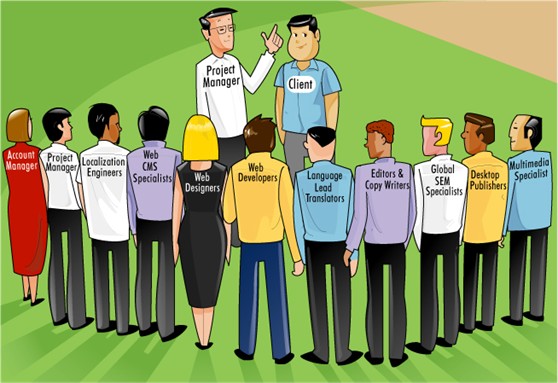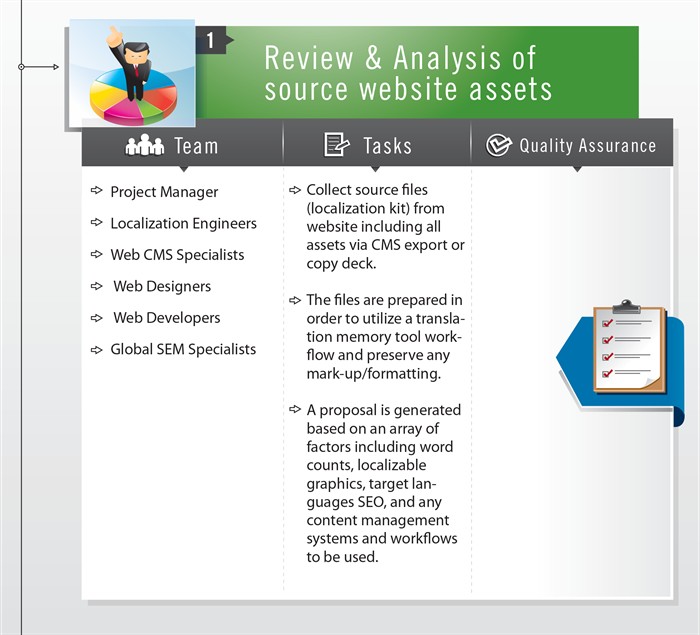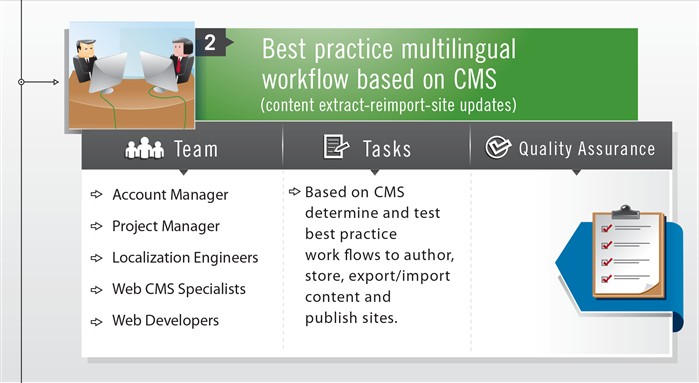Website Translation: Reviewing Source Files and CMS Workflows
They say a project is either won or lost in the scoping and planning phase or before it ever begins. I could not agree more. As with any website translation project, planning and project management are critical!

Each step in the process involves several key professionals with specific domain expertise and skills. The team members that may be involved throughout a website translation project include:
- Account Manager
- Project Manager
- Localization Engineers
- Web CMS Specialists
- Web Designers
- Web Developers
- Language Lead Translators
- Editors & Copywriters
- Global SEM Specialists
- Desktop Publishers
- Multimedia Specialists
Of course the most important team member is the CLIENT, whose collaboration and communication are critical throughout the project from project planning to client review and approval along the way.
The first steps in the actual website translation process should include:
Step 1: A review & analysis of source website assets
Step 2: A discussion on best practices for multilingual workflows based on your web content management system (WCMS)
Step 1: Review & analysis of source website assets
The review and analysis of your content and assets is the first step. We will assume you already applied best practices in the creation and implementation of a web content strategy to your English content/site (look for future GPI blogs on web content strategy).
Your translation agency partner should collect all source files (what we call a “localization kit”) from your website including all digital assets. This can be done manually or through the functionality of a web content management system if you are using one and your site is already populated with your final source language content.
These files are prepared in order to get a word count, preserve any mark-up/coding and to utilize a translation memory tool workflow when translating. The project and content are analyzed for:
- word count
- localizable graphics and multimedia
- target languages and subject matter
- documentation on the website
- SEO requirements
- any content management systems and workflows to be used

Step 2: Best practices for multilingual workflows based on CMS (content extract-reimport-site updates)
Most websites today are powered by web content management systems (CMS) and best practices in web content management strategy leverage these platforms to author, store, and publish content from a central CMS. Website translation projects can be completed under a variety of client-driven workflows including:
- Directly inputting translations into a web content management system
- Working with content exported to XML or other formats to localize and reimport
- Using a translation services connector between a CMS and a translation agency
Based on the web content management system (CMS) being used, as well as a company’s web resources available (authors, editors, copywriters, translators, etc…), a client and translation partner will determine and test best practice workflows to author, export, translate, import, provide online QA and publish content.

